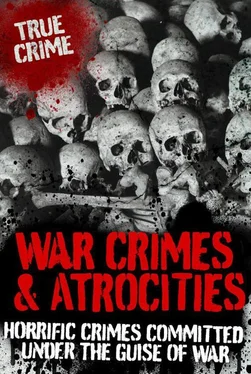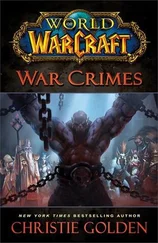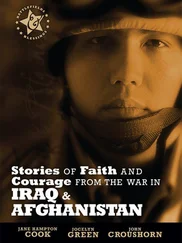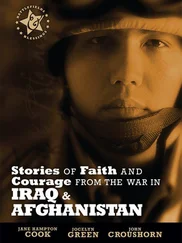CAPTIVE GERMAN OFFICER
On the morning of 10 June, the Second Panzer Division of the SS, known as ‘Das Reich’, was travelling across the country to join the fighting between the Allies and the Nazis in Normandy. At this point, it was becoming clear that the Allies had a good chance of invading France and overwhelming the German presence. During the Division’s journey, the soldiers met with constant sabotage and disrupution to their progress from the French resistance, who had stepped up their activities as the defeat of the Nazis began to look like a distinct possibility.
That day, Stürmbannführer Otto Diekmann of the Waffen SS First Battalion had been tipped off that an important German official, Stürmbannführer Helmut Kampfe, was being held captive by members of the ‘maquis’ in the town of Oradour sur Glane. Diekmann, who was a friend of Kampfe, reported the news to Stürmbannführer Weidinger, who also knew Kampfe well. The tip-off had come from the hated French secret police, the Milice, who had also reported that the townspeople were planning to execute Kampfe and burn him at the stake as a way of celebrating the Germans’ imminent defeat.
DREADFUL ATROCITY
Incensed at this news, Diekmann and his forces surrounded the town and ordered the soldiers to herd everyone into a public fairground. The soldiers told the townspeople that the authorities needed to examine their papers. When they were assembled, the soldiers singled out the women and children and took them to the church. The men of the town were taken to six barns nearby. Meanwhile, the troops set about looting the town.
What happened next has gone down in history as one of the worst atrocities of World War II. The Nazi troops, using machine guns, shot all the men in the legs, so that they would die slowly. They then set the barns alight, using kindling and torches, so that the men would burn to death. Out of 195 men, only five escaped: the rest met an agonizing end in the barns, having been shot and burnt to death.
SCENE OF CARNAGE
Having committed this dreadful atrocity, the soldiers then moved on to deal with the women and children in the church. They planted an incendiary bomb in the middle of the church, lit it and ran outside, leaving the women and children to die. Naturally, the occupants of the church tried to escape, but as they ran out of the doors or climbed through the windows of the church, the troops opened fire, machine-gunning the victims until they fell dead. In all, there were 247 women and 205 children who died that day.
Not content with this, the Nazis proceeded to burn the town to the ground. The soldiers then stole everything they could carry from the houses and continued on their journey to fight the Allies. When they left, the scene of carnage was discovered. A few dozen villagers had escaped as soon as the troops had arrived, and they returned to bury the dead. Over 640 victims had died, wiping out almost the entire community.
BURNT TO DEATH
When the news came out, the sheer brutality of what had gone on shocked the nation. There were stories of soldiers roaming the streets, hunting down victims who were hiding from them. In one instance, an old invalid was burnt in his bed; in another, a baby was put in a bakery oven and baked to death; and in another, victims were shot and bodies were thrown down a well so that they could not be buried. However, there were also tales of those who survived: one townswoman, Madame Rouffanche, managed to throw herself out of a high church window, and then dug herself into the earth between some rows of peas. In this way, she managed to hide until the next day, when the troops departed.
There are various theories as to why the atrocity happened. Some believe it was done as part of a deliberate policy by the Nazis to quell any kind of resistance. It came at a time when the French Resistance, especially its guerrilla arm, the Maquis, had been extremely active, sabotaging the movement of German troops through France in any way they could. However, there are those who think this is not a persuasive explanation. Oradour was not, in fact, a place that had a strong history of resistance activity. Moreover, the German troops at the time gave no reason for their actions.
CONTROVERSIAL TRIAL
Many support the theory that Diekmann went to Oradour purely to kill everyone in sight, acting on his own, out of sheer brutality, rather than because he had been given orders to do so. Some accounts report that his superiors, such as his commanding officer, Sylvester Stadler, were shocked at what he had done, especially with regard to his treatment of the women and children. It is believed that Stadler threatened to court martial Diekmann over the affair; however, he did not relieve Diekmann of his command. In the event, Diekmann was killed in action, on 29 June, so he was never tried.
In 1953, the perpetrators of the Oradour massacre were brought to justice. In February of that year, 21 former members of the Der Führer regiment of the Das Reich Division came before the courts at Bordeaux. There was much controversy about the trial, since none of the men tried were high-ranking former Nazis. Also, some of the defendants came from Alsace, which in previous times had been a French province. This meant that many French people viewed them as French nationals, and felt that they should have refused to commit the massacre. In their clients’ defence, their lawyers argued that they were merely conscripted soldiers, who would have been shot had they disobeyed orders.
When the verdicts were finally reached, there was uproar in France. Two defendants were sentenced to death, the others to prison sentences of between eight and 12 years. Some felt these sentences to be too lenient, and demanded that all the defendants receive the death penalty, while others argued that there should be no penalties for acts committed by conscripted soldiers under pain of death in a war situation. Eventually, all the defendants were freed, which made a mockery of the whole trial.
MISTAKEN IDENTITY?
Some commentators have pointed out that what happened at Oradour may have been a case of mistaken identity. The town of Oradour sur Glane is not far from another town with a similar name, Oradour sur Vayres, where in 1944, a high-ranking German officer, Karl Gerlach was being held. According to this account, Diekmann’s informants, the Milice, had got their facts wrong and named the wrong town. Not only this, but Diekmann had assumed, without checking, that it was his friend Kampfe, not Gerlach, who was being held there. Thus the massacre was the result of a mistake. Be that as it may, massacres and atrocities of this nature were not unusual among Nazi troops, and we know that little attempt was made to discipline Diekmann for his appalling crime.
Today, the town of Oradour still stands in its ruined state as a memorial to those who died, so that visitors can witness the true horror of what happened. Many people travel there to see the ghost town, which stands as a testament to the death and destruction wreaked by the Third Reich in its final days and as a reminder that such a regime of intolerance and hatred must never be allowed to exist in the future.
1940–44

One of the most shameful aspects of the French capitulation to the Germans in 1940 was the country’s collaboration in sending thousands of French Jews and others to the gas chamber. Because the French government decided to surrender to the Germans early on in the war, so as to gain favourable peace terms, many ordinary Frenchmen and women became involved in the process of persecuting the Jews and other groups that the Nazis thought undesirable, such as those with disabilities, homosexuals and others. Because the mass genocide of the Jews required a large administrative and bureaucratic structure, many French citizens became involved in the daily tasks of identifying individuals, arranging for their transportation to the death camps, and so on.
Читать дальше













